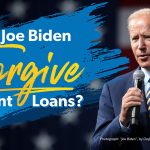Last month, the Biden administration announced that it was adopting a rule calling for federal procurement officials to select products and services, whenever practicable, from a list of those with ecolabels and other sustainability standards. This reorientation of procurement toward sustainable products and services is an exciting step forward on climate change mitigation, energy and water conservation, and a host of other sustainability objectives.
The executive branch, through the Federal Regulatory Acquisition Council, has addressed sustainability in past procurement rules, but this is the first time it is innovating with “nudges” to guide the actions of procurement officers. The new rule also effectively leverages standards created by the private sector while ensuring appropriate vetting by the government with public input. With this blend of nudges and standards, the administration has created a model of how procurement policy can build markets for socially beneficial products and services.
As the world’s largest buyer of products and services, with roughly $750 billion in annual spending, the federal government has enormous power to shape markets. In Executive Order 14057, the administration committed to using this market power to help scale businesses poised to step forward with sustainability solutions. Under the Federal Procurement and Administrative Services Act, it also has a duty to carefully steward taxpayer funds and ensure effective program delivery with its procurement policy. All of these objectives are achieved with the Biden administration’s new rule.
The Power Of The Nudge
Business leaders and policy makers familiar with the “nudge” theory of behavioral economics know they can advance their objectives by leading people toward a preferred option without depriving them of freedom of choice. For example, according to the World Resources Institute, events organizers, university cafeterias, and other food providers are using nudge theory to promote climate-friendly food choices by, for example, making the meat-free option the default choice at public functions.
The administration takes a similar approach in its procurement rule. Under the rule, products and services defined in the rule as “sustainable” are now the default choice for the officers who specify agencies’ procurement requirements. These “requiring” officers are free to depart from the default choice, but they must provide a written justification for doing so based on the default’s failure to provide a reasonable price, performance, or delivery schedule. Moreover, before deciding that a sustainable product or service cannot be procured at a reasonable price, they must compare life-cycle costs. With this required attention to product durability, the rule greatly reduces the chances that sustainable alternatives will be rejected in favor of inexpensive products designed to head quickly to the landfill.
Requiring officers necessarily must consider a wide array of factors in selecting among available products. Prior to last month’s announcement, energy efficiency and other sustainability concerns were among these factors, but the regulations requiring consideration of those sustainability factors included no mechanism for ensuring or even encouraging follow-through. Requiring officers could easily disregard sustainability in juggling their many priorities.
Under the new rule, requiring officers receive a critical nudge toward sustainability. Whereas selecting the less sustainable alternative requires effort—an explanation backed up by analysis— the use of products and services with established sustainability credentials is effortless.
The Power Of Private Standards With Public Vetting
A second key feature of the new rule is its reliance on ecolabels and other standards developed by the private sector and vetted by the Environmental Protection Agency or, in a small number of cases, the Department of Energy or Department of Agriculture. In the rule’s definition of Sustainable Products and Services, some are identified by name, such as the ENERGY STAR® ecolabel for appliances delivering on energy efficiency and the WaterSense® ecolabel for appliances ensuring efficiency of water use. Others, such as the EPEAT® standard for electronics, are included by virtue of the rule’s citation to Environmental Protection Agency’s (EPA’s) recommended list of standards. Hundreds of brands will now receive preferential treatment under federal procurement policy due to their adherence to these standards.
The rule provides an “omnibus” contract clause for inclusion in all procurement contracts that specifies the product or service categories that have standards covered by the rule. Contractors can therefore easily determine which products and services meet the standards and include them in their planning.
This approach creates enormous efficiencies for companies bidding for federal contracts. Rather than working on a contract-by-contract basis to determine whether and which sustainable products and services will be required, the omnibus contract provision provides clear direction and certainty.
The rule also has a “flow down” provision, requiring contractors to ensure that their suppliers are using the sustainable products and services referenced in the omnibus contract clause. This ensures consistent treatment of contractors—the requirements do not depend on whether they elect to use subcontractors—while further scaling the sustainability solutions market.
Encouraging More Sustainable Products And Services
Sustainability standards not specifically identified in the rule and with no EPA recommendation as of October 2023 do not benefit—yet—from the rule’s preferential treatment. This raises an important question: how many more categories of products and services currently have—or could soon have— sustainability standards that would benefit from a rule with expanded coverage? EPA is clearly welcoming new entrants, having established a transparent and easy-to-navigate assessment framework focused on environmental effectiveness and adequacy of process and procedures. Will private-sector sustainability innovators participate in this assessment process, including the necessary public comment period, in recognition of the rule’s power to drive market demand?
Momentum is building for this public-private partnership. In November 2022, EPA announced it is expanding its recommendation list to support federal sustainability goals, highlighting opportunities around climate change and safer chemicals. Early this year, with $100 million authorized by the Inflation Reduction Act, it launched a program to craft an ecolabel for construction materials with substantially lower embodied carbon than industry averages.
Reorienting federal procurement of construction materials by prioritizing those with this ecolabel will be a difference-maker for businesses innovating around decarbonization of the industrial sector.
Other sustainability innovators should now be thinking about how they can use this powerful tool. Companies in the food and agriculture sector should take notice of the White House National Strategy on Hunger, Nutrition, and Health, in which the Biden administration commits to updating the Federal Food Service Guidelines to promote fruits, vegetables, whole grains, and other healthy and sustainable options in federal facilities. Private sector leaders should leverage these guidelines to meet EPA’s requirements for sustainability standards. The sustainable products procurement rule could then be updated to accelerate decarbonization of the food and agriculture sector in addition to the industrial sector.
Securing Supplier Disclosures to Ensure Sustainable Supply Chains
An exciting moment has arrived for federal procurement, with the possibility of countless sustainability innovators newly motivated to help accelerate the shift of federal supply chains—and the entire economy— to a more sustainable footing. But the government has little visibility into how its key suppliers are managing sustainability-related risks, especially the looming threat of climate disruption. The Biden administration recognized this problem in 2022 when it proposed a rule that would require the nation’s largest contractors to disclose their climate-related risks along with their greenhouse gas emissions and targets for reducing those emissions. To ensure more sustainable federal supply chains, it should now finalize this supplier climate risk disclosure rule.
Read the full article here
















